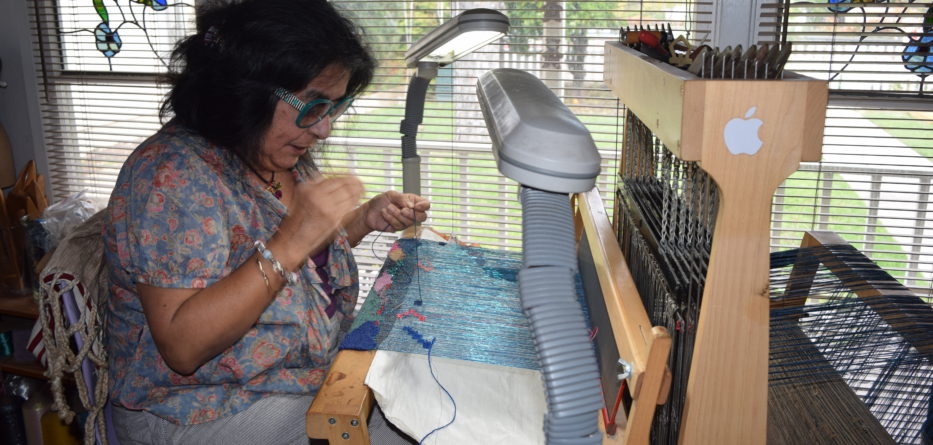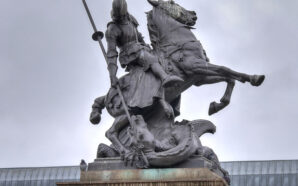An artist that has changed the form of art through needlework to express the plight of people and earth
Estephany Haro
El Observador
Consuelo Jimenez Underwood is an artist that has broken barriers with her unique artwork.
For over 30 years she has been recognized for her fiber artwork which has been displayed in the most important museums of the country, such as, the Smithsonian American Art Museum. She is one of the few awardees of the prestigious NALAC Award, from the nonprofit National Association of Latino Arts and Cultures which awards Latino artists from all states.
However, she did not always want to be an artist. Before enrolling in the Art Undergraduate program at San Diego State University, she wanted to study Religion but she realized that what she wanted was the freedom to express herself without anyone telling her not to do so. Therefore, she knew she could find that freedom through art.
She went from using a paintbrush and pigments to using a needle and thread to express herself through art. At the same time “empowered by the voices of my indigenous maternal ancestors, I began to cross the intellectual borders that separated the hand and the mind(craft), from the spirit (fine art)” Jimenez Underwood said in her biography.
Jimenez Underwood was born in Sacramento to a fourth-generation Californian mother, her father was one of the first Braceros from Mexico to come to the United States. Her father would cross the border back and forth until she was 10 years-old. This childhood experience led her to create her work collection titled “Borderlines.”
“I think the reason why I’m very different is because I’m one of the few that has survived to this rebel society that actually illegally crossed my dad. [I] smuggled him when I was 3 years-old, putting my feet over his body with a tarp on top of him covering him in the back seat,” Jimenez Underwood said. “It was horrific, it was horrific growing up like that and I used to think when I was a kid, how can they do this to this land…because I could see this division that was invisible,” says Jimenez Underwood. Her unfortunate experiences as a child shaped her into the artist she become by portraying her experiences through her art.
Her piece “Undocumented Flower”, a mural that portrays the U.S.- Mexico border with colorful big flowers on both sides represents the people on both sides of the border, as well as her experience without her dad and the role that nature had on her when growing up in the fields.
“Every winter we would go pick in the imperial valley, and I’d rolled up in the fields but you know what? It’s ok because I’m in the fields and this is earth, the true nature of our land and this land is so beautiful, it doesn’t judge… so I started talking to nobody but the land and the wind,” Jimenez Underwood said.
However, even though she enjoyed being surrounded by nature, she also wanted a different life and she knew that her only way out of the fields was through education. Jimenez Underwood knew she wanted to be the first one in the family to get her high school diploma and eventually attend college when she realized she was the only Mexican in her class that could read perfectly.
“It was such a traumatic experience growing up the way I did, but I knew that there were bigger forces than people in this world.”
Consuelo plans to continue showcasing her artwork in different museums throughout the U.S. and she’s currently using her weaving loom to work on a “rebozo” that has a unique meaning and unique textiles, such as fabric, yarn and synthetic fibers that distinguishes from the rest.
Future events and more information on Consuelo Jimenez Underwood may be found at www.consuelojunderwood.com.






